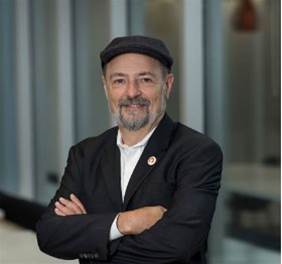
Sustainability is increasingly a driver of growth in parts of the IT industry. That was more in evidence recently when data storage business Pure Storage announced its Pure1 Sustainability Assessment tool to help customers optimise power consumption.
The rationale for the focus on sustainability is simple - all about the bottom line. According to CEO Charles Giancarlo, “It's starting to become an issue in almost every trade transaction we make with an enterprise organisation. I don't think it's filtered down yet to the commercial the mid-market yet, but it's definitely going that direction.”
During his five-year tenure so far at Pure Storage, Giancarlo told Digital Nation he has seen a significant change in the posture of buyers.
“When I first came on board and started seeing customers, I was very proud to tell them that we took less space, power and cooling — and crickets. Most of the time they said ‘Well somebody else pays for power'."
The change is quite recent he said, “It's quite recent as last six months or so, eight months… I was in Europe, extensively in the northern spring. It's not just a question of pricing power, which of course has skyrocketed, but the availability of power, which focuses the mind.”
Storage is a huge IT cost, perhaps as much as 20 to 30 percent of data centre spending, he told Digital Nation Australia. It is also an energy hog at a time when large enterprises and government departments are more focused on ESG policies than ever before.
Pure Storage argues that sustainability has been a part of its DNA from its inception as a disruptive innovator in the storage industry.
According to the company statement accompanying the release of the assessment tool, “As sustainability and energy savings become increasingly critical to organisations around the globe, Pure is continuing to invest in helping customers achieve their environmental and energy reduction goals.”
The new assessment tools are designed to provide gives customers with visibility on their environmental impact and then proactively suggest optimisation opportunities.
Features include:
- Power savings analysis: Showing power used compared to the appliance’s nominal power load. Customers can monitor power consumption efficiency for an entire fleet, by data centre site, or at the individual array.
- Greenhouse gas emissions monitor: Providing direct carbon usage estimates based on the power used.
- Assessment: Customers can assess how to improve power efficiency by metering Watts per unit of data on the array that can be read back.
- Recommendations: Providing proactive insights and guidance on improving direct carbon footprint.
Sustainability is also a driver of product development according to the company.
With the recent launch of the FlashBlade family of products, the company claims to have doubled the power efficiency of previous versions.
According to Alvin Ong, CIO, Nanyang Technological University, Singapore, "Pure FlashBlade has helped us make tremendous progress in NTU’s supercomputing projects. It has also freed up computing resources and enabled us to optimise rack space usage, leading to improved power and cooling efficiencies.
"We also foresee a positive environmental benefit by not having to undergo wholesale hardware changes during technology refreshes."




.png&h=140&w=231&c=1&s=0)





 iTnews Executive Retreat - Security Leaders Edition
iTnews Executive Retreat - Security Leaders Edition












_(1).jpg&h=140&w=231&c=1&s=0)



